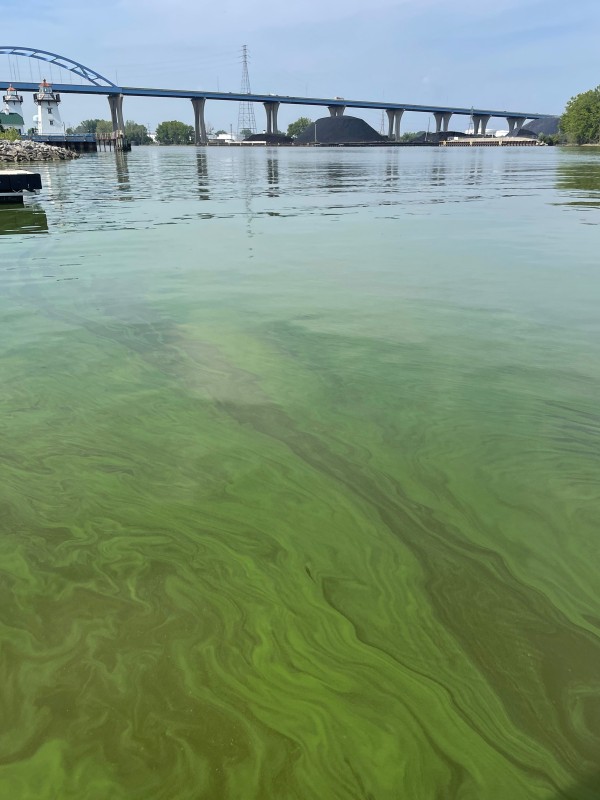Cyanobacterial harmful algal blooms in the Great Lakes have increased in both frequency and toxicity over the past several decades, resulting in an increased impact on drinking water, recreational activities, food production and more.
In the first integrated experimental study of cyanobacterial harmful algal blooms across Great Lakes environments, researchers are examining Lakes Superior, Michigan and Erie to determine the impact of different nutrients and temperature influences on bloom growth and resulting toxins. The new project — funded by Sea Grant programs — offers a standardized approach to compare patterns across the three lakes, resulting in a better understanding of what conditions cause certain cyanobacteria to make certain compounds. This knowledge in turn will help to develop a more specific bloom management strategy for water treatment experts.
“We’re dealing with lakes with different histories, geochemistries and blooms, and we can’t put all cyanobacteria into one box and find one single solution,” says George Bullerjahn, Distinguished Professor Emeritus of biology at Bowling Green State University. “This research will target each lake and identify potential management strategies special to those environments. It would be great if we could say every bloom is the same, but that’s clearly not the case.”
Bullerjahn is focused on studying Lake Erie, specifically in the central basin and Sandusky Bay, while Todd R. Miller, associate professor in the Joseph J. Zilber College of Public Health at the University of Wisconsin Milwaukee, is examining waters from Green Bay in Lake Michigan, and Robert W. Sterner, director of the Large Lakes Observatory and professor of biology at the University of Minnesota Duluth, is conducting research on waters from western Lake Superior.
To learn more, visit ohioseagrant.osu.edu.
OHIO SEA GRANT




